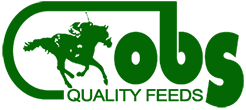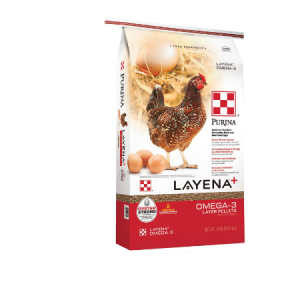Purina Layena Plus Omega-3
Purina Layena Pellets & Crumbles is optimum nutrition for healthy birds and nutritious eggs. A 16%-protein, high-calcium ration formulated with prebiotics, probiotics and yeast for top-producing laying hens once they reach 18 weeks of age.
Purina Layena includes our Oyster Strong® System for strong shells. Oyster shell provides another source of calcium when the hens need it most. Oyster shell is a larger particle size than limestone.
This means that oyster shell will stay in the digestive tract longer and will provide a source of calcium for egg shell production over a longer period of time than smaller particle sources of calcium. This is especially important at night when egg shell formation is rapidly occurring and dietary sources of calcium are limited because the bird is not eating.
Guaranteed Analysis
Crude Protein MIN 16.00 %
Lysine MIN 0.70 %
Crude Fat MIN 3.50 %
Crude Fiber MAX 7.00 %
Calcium (Ca) MIN 3.25 %
Calcium (Ca) MAX 4.25 %
Phosphorus (P) MIN 0.45 %
Vitamin A MIN 3000 IU/LB
Vitamin D3 MIN 1000 IU/LB
Vitamin E MIN 70 IU/LB
Manganese (Mn) MIN 100 PPM
Methionine MIN 0.30 %
Salt (NaCl) MIN 0.20 %
Salt (NaCl) MAX 0.70 %
Omega-3 Fatty Acids MIN 1.00 %
Feeding Instructions
Description
- Feed Purina Layena Plus Omega-3 pellets free-choice as the sole ration to laying chickens (including backyard egg producers, small to medium breeds and show and ornamentals) after 18 weeks of age and throughout the laying cycle.
- Purina Layena Plus Omega-3 pellets should only be fed to chickens that are laying eggs.
- Always provide shelter and a constant supply of fresh, clean water.
- Consumption will vary depending upon season of the year, nutritional needs of the animals and availability of other foods.

